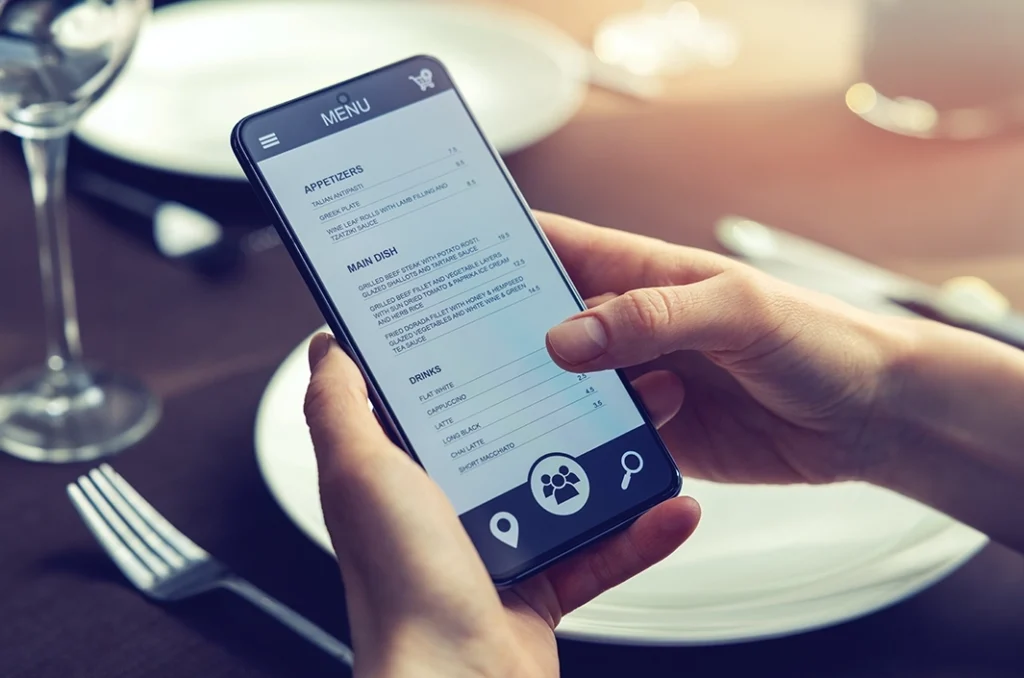Think about the times you have picked up on a scent and it reminded you of someone or something in your past. Or those late nights you stay on instagram for an absurd amount of time scrolling through Mukbang videos even if you absolutely hate the sound of people slurping noodles and crunching various fried foods… No? Just me? Anyway, sense stimuli is very powerful and it influences what decisions we make, whether we realize it or not.
The fact is our senses are classified by everything we can touch, smell, see, and hear. It has been proven time after time that brands are more memorable when the experience stimulates most, if not all, of the senses. Every industry from automotive, cosmetics, to hospitality has used sensory tactics to enhance the consumer’s cognitive experience and intensify the brand perception.
How can you use these universal strategies and apply them to restaurant industry marketing?
Stimulating through interior design
The on-premise sight and feel experience is shaped largely by the interior design of the space, as a restaurant should be satisfying the smell and taste aspect of the senses. Consider everything the guest will see, touch, and hear, and you realize how critical it is to make sure every aspect supports a memorable moment.
Interior design is responsible for the look and feel of the on-premise experience. A restaurant is already satisfying the smell and taste aspect of the senses (or it should be). It’s critical to examine how we can engage in other ways to make memorable moments. Consider everything the guest will see, touch, and hear. For example, if a surface is too cold or rough, it could negatively impact their experience. On the other spectrum, the hand of the upholstery, the menu coverings, paper finish or texture can have a lasting effect on a guest’s experience. The overall aesthetics will visually stimulate by using attractive colors and lighting that will add to the cohesiveness of the interior design and branding.
Experiential stimulus marketing
These days, marketing isn’t limited to digital avenues or OOH—innovation and creativity is key. A great example of successful sensory marketing is Dunkin’ Donuts in South Korea. When the DD jingle played on municipal buses, an atomizer released a coffee aroma. This campaign increased visits to Dunkin’ Donuts outlets near bus stops by 16% and sales at those outlets by 29%. By stimulating two senses that are associated with a brand, the strategy encourages consumers to think of the brand subconsciously. And they aren’t the first brand to reap rewards from this sort of innovative thinking: Disney has been using “Smellitzers” (vents that pump out various scents throughout the park) to immersify the rides but to also trigger hunger and cravings. The smell of popcorn in some parts of the park are intentional—it’s time for a snack break!
Think of ways you can combine these elements to create immersive experiences. These innovative combinations will engage the guest and keep your brand memorable.
Stimulation on social media
Social media is the insatiable monster of the marketing industry, and we don’t see it going anywhere anytime soon. Instagram, Facebook, Twitter, TikTok, YouTube, and Pinterest are the top platforms for restaurants and it’s become increasingly challenging to stand out with users and consumers being bombarded with unique images and content daily. It’s become a must to follow what is trending, but at the same time, remain different.
Test unique strategies on different platforms. Explore producing videos with an ASMR microphone for TikTok and YouTube. Share them on other platforms to gather view and engagement data. Create captivating videos with slow motion ingredient pours, or try micro lens imagery to show hi-definition textures that your followers feel like they can taste and touch. Because it’s impossible to smell through your phone or laptop, be descriptive in the captions or video. Remain visually enticing by capturing the steam of aroma rising from the food. These explorations will make your brand stand out and keep it top of mind when a consumer considers where to dine next. You can find other Instagram tips for restaurant marketing here.
Operational opportunities
Patrons are made aware of a brand and are initially enticed through the door through effective marketing strategies. Once they’re in, thoughtful and considerate interior design is what builds on the brand and associated experience. But then what? Now it’s time for the operational team to make that experience one for the guest to remember and want to come back to. There are many sensory marketing opportunities that have the potential to make a great impact on guest behavior. Something as small as offering a warm towel instead of a moist (yuck!) towelette, makes a difference when it comes down to the wire! A drive-thru experience could include music and wafts of product aroma as they are ordering—look me in the eye and tell me you haven’t ordered an extra order of fries just because they smelled so good. Tying in the visuals of a perfectly plated meal with the right music and/or atmospheric sounds will create an all around on-brand sensory experience. It’s also important to consider consumer behavioral shifts that may impact trends in a post-pandemic world.
Senses affect the deepest part of our brains and subconsciously influence what decisions we make. Expanding marketing thinking past headlines and promotions will keep things fresh and Patrons engaged. Sensory marketing is understanding what other tactics can be used to keep brands memorable.


